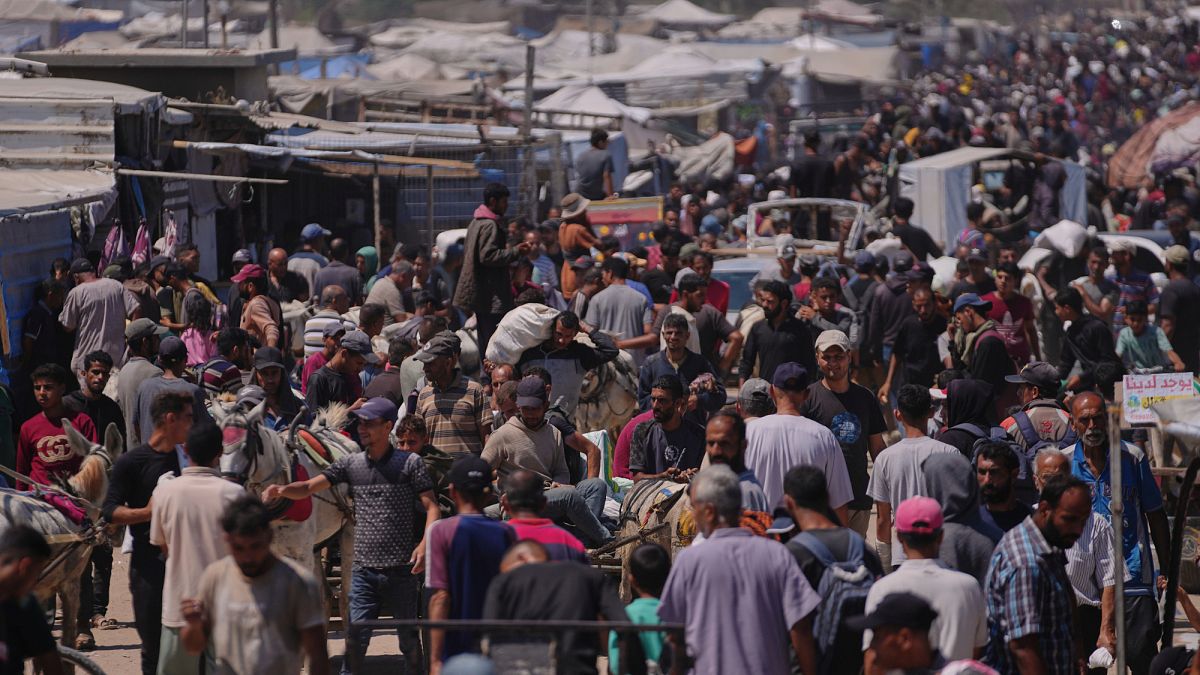

In the midst of challenging times, the struggle for aid continues in the Gaza Strip, where recent events have highlighted both the complexity and the human cost of ongoing conflicts. In recent reports, at least 18 individuals lost their lives in a tragic incident when an Israeli strike hit a street crowded with civilians, reportedly while they were collecting food. Medical officials from the area confirmed the casualties, underscoring the devastating impact of such incidents on the civilian population.
The targeted strike occurred in the central Gaza city of Deir al-Balah, where Palestinian police were distributing flour at a local market. For many in Gaza, accessing basic necessities has become a daily struggle, complicated further by the recurring danger of violence. This incident is part of a series of air attacks, shootings, and bombardments, which have claimed hundreds of lives among civilians who were merely seeking aid amidst a devastated landscape.
The Israel Defense Forces (IDF) have initiated an inquiry into potential war crimes, prompted by growing evidence and allegations that troops have deliberately targeted Palestinians gathering to receive aid. This step reflects a commitment to understanding the full context of these tragedies and addressing the international concerns they raise. Amidst the investigations, the global community watches closely, intent on ensuring that humanitarian needs are met without unnecessary risk to civilians.
While the IDF’s investigation unfolds, the broader challenges remain. Distribution of aid in conflict zones like Gaza is fraught with logistical hurdles and potential for violence, which only exacerbate the dire situations of those in need. Aid organizations and local authorities continually adapt strategies to ensure that essential supplies reach the hands of those who require them most, even under difficult and sometimes dangerous conditions.
The international landscape adds further complexity to these local issues. Recent US military actions against Iran demonstrate a shift in the global military calculus, affecting not only immediate conflicts but also influencing how nations perceive the use of force. Increased readiness by global powers to engage militarily rather than seek diplomatic solutions could reshape alliances and rivalries around the globe. Such geopolitical moves necessitate a careful evaluation of how force is employed and its repercussions on humanitarian efforts worldwide.
For many in Gaza and other conflict-affected regions, the priority remains a peaceful resolution to ongoing tensions that allows for stability and sustainable rebuilding efforts. Aid workers continue their vital roles in these areas, striving to provide relief and foster hope amidst adversity. Ensuring that aid reaches those in need without becoming a focal point of conflict requires enduring commitment and collaboration among local and international stakeholders alike.
In summary, the recent events in Gaza underscore the urgent need for nuanced, compassionate approaches to conflict resolution and humanitarian aid distribution. By focusing on understanding and addressing both immediate tragedies and broader tensions, the global community can contribute to a more hopeful future for civilians caught in the crossfire of larger geopolitical disputes.
Source: {link}
